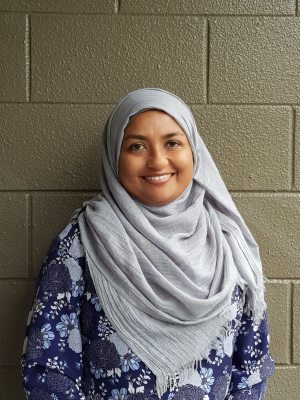Every Teacher Is a Language Teacher: Strategies for Supporting Multilingual Learners of English in the Mainstream Classroom
English is spoken by one in five people around the world, with estimates indicating that by 2050, the total number of English speakers will to grow to 2 billion people. For the majority of this figure, English will be an additional language that enriches their multilingual repertoire. The high demand for learning English and the increasing levels of migration mean that a significant proportion of students in schools are likely to be learning English alongside other curriculum content. Statistics from Australia, Canada, New Zealand, the United Kingdom, and the United States show that, on average, 20–25% of the student population in primary and secondary schools speak English as an additional language. In some contexts, 90% of the school population may identify as multilingual learners of English.
Multilingual learners of English studying in an English-dominant school context have the dual challenge of learning a new language as well as learning new content through the new language. We must remember, too, that the ability to carry on a conversation in familiar face-to-face situations is not the same as the extent to which one can comprehend and use the oral and written language that appears in the subject matter of academic disciplines and in classroom discussions about this subject matter. Jim Cummins maintains that a student’s conversational fluency is not an indicator of their academic language proficiency, and that students may take a long time to attain the latter. This means that the input multilingual students receive throughout their instructional time needs to be targeted toward supporting their language and content learning.
Traditionally, supporting multilingual learners of English in schools has been the responsibility of specialist English language teachers. However, the changing demographics show that educating this increasing group of students has become a widespread challenge that demands a more extensive approach. Given the linguistic, socialization, and assessment challenges involved in educating students who are developing their language proficiency and are typically new to the country as well, it is clear that traditional approaches are not sufficient. It is time to recognise that every teacher, regardless of their curriculum specialization, has a responsibility to teach language. Every teacher is a language teacher.
Collective Responsibility
The idea that every teacher teaches language doesn’t mean that every teacher needs to be a language expert, but rather that they are experts of the language of their subject areas, and they provide extensive language support to aid comprehension and participation. For example, take the word tone. How might the meaning of the word change depending on whether you encounter the word while studying English literature, classical music, contemporary art, or drama? If you, as a teacher, are able to help students understand the nuances of meaning between the concepts within each curriculum area and how to use the word in communication, you are helping students unpack the language and supporting their language development.
A shared sense of community and responsibility for educating multilingual learners of English is an important characteristic of successful schools. When language and content teachers can collaborate to meet the linguistic needs of students, it helps to strengthen students’ communicative language development, promote critical thinking, and increase levels of cognitive engagement. As students grapple with complex, high-level subject matter, they have to actively apply language skills within real-world academic contexts, making learning more meaningful.
Integrating Language and Content
So what does integration of language and content look like?
-
- Focus on the four Cs in planning lessons:
- Content: What topic is being taught? (E.g., the water cycle)
- Communication: What topic-related language will learners communicate during the lesson? (E.g., language of explanation)
- Cognition: What thinking skills are needed? (E.g., explaining, describing, ordering)
- Culture: Is there a cultural focus in the lesson? Will different cultures place different meanings on the topic?
- Consider the language of the lesson. What might be content-obligatory language — the language that is specific and essential for a lesson and content-compatible language — the more general non-subject-specific they may have already learned.
- Set language and content objectives for each lesson. Language outcomes should be intentionally built into both planning and assessment.
- Determine the input and output. How will information be presented to the class? Orally? Or in writing? On paper or digitally? What and how much scaffolding can you provide to differentiate instruction? How will learners be required to produce language themselves? Will they do this individually? In pairs? In groups? What would success look like?
- Incorporate the teaching of the four skills — reading, writing, listening, and speaking — into every lesson.
- Focus on the four Cs in planning lessons:
Providing effective content and language integrated instruction is not simple. However, when thoughtfully implemented through collaborative efforts, it can empower students to leverage language as an instrument for active learning and critical thinking. It begins, though, with a shift in thinking about the role of the teacher. Teachers must embrace the importance of supporting students’ language development and see themselves as language teachers, no matter what subject they may teach — because language is the medium through which students access content knowledge.

